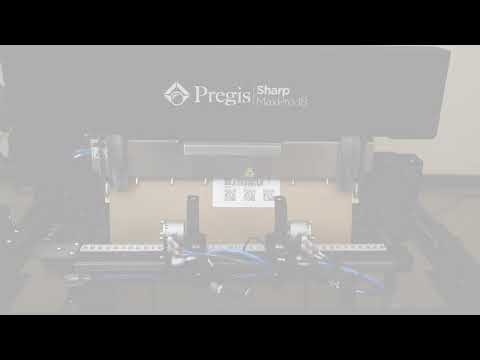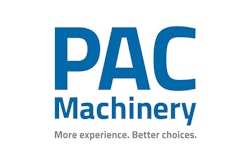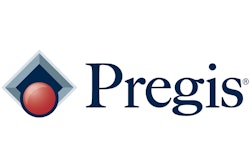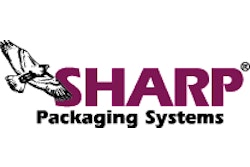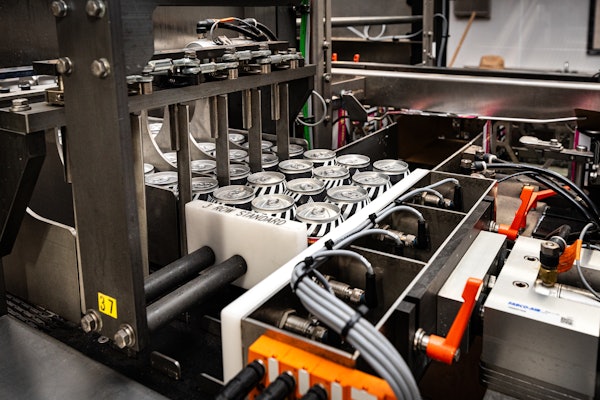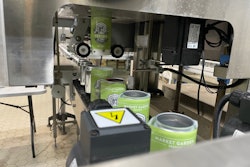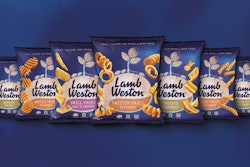The well-sighted among us may be blissfully unaware, but prescription glasses have long been an expensive but unavoidable necessity. This has been a pain point for consumers since the genesis of the prescription eyewear industry. According to Sean Pate, marketing VP, Zenni Optical, glasses simply never underwent price optimization as a commoditized item. There’s quite a bit of margin built into the traditional brick and mortar retail optometrist, and even discounters like Lens Crafters or Costco sell most pairs of glasses well into the three-figure territory, north of $150.
Zenni Optical was born in 2003 when its founders identified the outlandish difference between manufacturing cost and unit price among existing prescription eyewear channels and sought to inhabit an as-of-yet unoccupied niche. The result was a volume-supported direct-to-consumer model with low entry prices. The entry price for prescription glasses is $6.95, and the average checkout for a customer buying a pair of glasses is $40.
“The company’s ethos is rooted in seeing that people are being, effectively, ripped off in paying for prescription eyewear,” Pate says, “The cost in making those goods is nowhere near what the cost is that’s passed on to the consumer. There’s sometimes a 10x markup or more. That means that many people are simply denied access; price is a barrier to being able to see.”
Genesis and packaging
Zenni spent its first decade on a shoestring budget with little to no marketing, developing a vertically integrated manufacturing and supply chain that’s not beholden to any of the industry giants that exist today. With that supply chain firmly established after 15 years, the company has only recently been earmarking budget to marketing, making a splash by being the first optical industry brand to sponsor an NBA basketball team and have its logo appear on gameday jerseys--also the first logo on a Chicago Bulls jersey. While a certain type of customer had found and used Zenni over the years and there has been an organically cultivated customer base, this recent plunge into marketing has the company growing at a 25-30% pace, year over year. At its current pace, that equates to 10,000 to 15,000 individual packages per day.
The direct-to-consumer e-commerce model was a key in controlling costs from the get-go, eliminating brick and mortar retail altogether. The roughly 2,500 styles of frames, and all applicable prescription lenses, are manufactured to order in Zenni’s manufacturing facility in Danyang, China, then shipped via UPS air freight in 500-count corrugated shippers to Zenni’s San Francisco Bay Area fulfillment center. Each pair of glasses carries a unique identifier via barcoded order number throughout the process, so the order can be tracked and traced through the entire supply chain. An order placed online in the States triggers a specific style and prescription to be produced in Danyang, which is then shipped via bulk corrugated case to the San Francisco fulfillment center. There, glasses are placed into durable plastic glasses cases, then pouched and labeled. The barcode stays with each pair of glasses in the case for reverse logistics and return purposes.
Fulfillment for Zenni had long meant manual pack stations with an operator picking the frames from the shippers, scanning the frame’s barcode to identify and match with a mailing label, hand-packing first into the glasses case, then into hand-sealed bubble mailers before hand-labeling with a separate pressure-sensitive shipping label. But according to Simon Goh, Shipping Manager at Zenni, the company has been facing the same dearth of capable labor other industries have encountered. Given its NorCal address, space is at a premium at Zenni. And when volumes are going nowhere but up, the cost of secondary packaging material for shipping goes from negligible to having a big impact on the bottom line. Considering all of these factors, Zenni turned to automation to manage the skyrocketing growth.
Fulfillment center automation
Goh attended PACK EXPO Las Vegas in October of 2017 to research automated bagging systems. There he was introduced to PAC Machinery and Sharp Packaging Systems by Pregis. Goh initially purchased four SX automated poly bagging machines from Sharp. He then purchased a single Rollbag R1285 automatic bagger from PAC Machinery, and is in the process of adding three more, so the fulfillment center will soon contain eight total automated pack stations with tabletop baggers.
“The pneumatic heat seal produced on the PAC Machinery bagger, which creates a comparatively thick seal with high integrity, is what drove us to add more of the PAC machines,” Goh says, adding that he’s had good success with the Sharp machines as well.
As it stands, Zenni is not fully converted over to the automated pack stations. Roughly half the volume of glasses shipped out are still hand-packed in bubble wrap packs with hand-applied 4- x 6-in. PSL shipping labels printed from a Zebra label printer. But seeing the old process and new process side by side brings the difference between the two into sharp relief.
“One metric I use is the number of steps an operator requires to move each shipper,” Goh says. “On the manual stations, an operator has nine steps to complete per shipper. On the automated stations, we’ve reduced that to five steps, which saves a lot of time, and increases productivity by about 40 percent.”
It also saves money. The bubble mailers the company had previously used cost about $0.15 apiece. The automated pack stations use printed pre-made poly mailers on a roll instead of bubble mailers, cutting the cost to $0.04 to $0.05 per polybag pouch mailer, a significant savings in material costs alone at the volume Zenni pushes out daily. The durable glasses case, it turns out, can withstand about 200 lb of weight, negating the need for the gentle care function of bubble shippers anyhow.
The pack stations use pre-made poly mailers in three sizes, small, medium, and large, with the small, single case size accounting for 70% of volume. These sizes were optimized to carry both their contents and the label with minimal material usage. Operators make simple adjustments to the machines via HMI in order to switch to medium and large sizes, and add corresponding rolls of bags, to accommodate orders of several prescription orders.
As soon as an operator scans the barcode for a single pair of glasses, software communicates the barcode-matched order number to the PAC machine’s printer. Shipping label information including address and postage is printed directly onto the poly mailer bag, saving another cent or two on the shipping label. The PAC machine uses a Datamax thermal transfer printer, with the ink ribbon as a consumable.
Bagged and labeled shippers are manually placed into a post office-issued OTR (over the road) caged mailing container for pickup by USPS, but Goh has been eyeing conveyor systems to further automate this process.
Unforeseen benefits
The new printed poly mailer bags, bright teal and replete with Zenni branding and logos, got an immediate positive reaction from customers, who appreciated the improved packaging experience. Also, thanks to the new poly mailer bag packaging method, Zenni was able to negotiate a better postage rate from UPS. The poly bags occupy less space than the bubble mailers, so they can ship less volume.
“When you compare the bubble mailer with the poly mailer bags, the difference is about a 50 percent dimensional savings, and 10 percent less weight” Goh says. “They’re half as big, so we get a better deal from the carrier.”
What’s next
With Zenni pivoting from infrastructure building into customer acquisition-mode, whether that’s via marketing on NBA jerseys or in niche market pieces like this one, its customer base has nowhere to go but up. As Pate says, the people who have needed to find Zenni to access inexpensive eyewear have already found them, resulting in an existing, loyal customer base in the multi-millions. But there’s a second tier of potential customers in the mid-market range that has Zenni leaning in to meet high-end slicksters like Warby Parker on shared turf.
As this occurs, Goh will be looking for new ways to automate, improve productivity, and do more with less. A second fulfillment center on the East Coast is in play in the coming years to take advantage of the new USPS zone pricing, and Goh is already beginning to scope out automation suppliers.
“The eyewear industry is still predominantly made up of the brick and mortar retail space,” Pate says. “There’s still a major education curve, but the sky’s the limit and there’s so much room to grow online. Only about 10% of the global eyeglass wearing public do their eyeglass shopping online, we effectively own half of that by today’s volume, so there’s a lot of area to grow.”
Tabletop bagging automation
At Zenni, Goh employs PAC Machinery’s Rollbag R1285 automatic bagging machines, which integrate PAC’s existing automatic bagger platform with direct-to-bag printer and variable data software. The printer can apply, directly to the poly mailer, almost any data needed, including a unique delivery address, barcode, product info, return address, etc. The software/printer integration has the capacity to store as many as 20 job configurations. Equipped with a 7-in HMI touchscreen interface and a 4-in thermal transfer printer (203 dpi), the Rollbag R1285 bagger is designed for “next-bag-out” printing—efficient mail order fulfillment packaging using poly mailers like the ones used at Zenni. The next-bag-out printing feature enables the packer to scan a packing list and print the corresponding shipping label on the next bag that is disbursed from the bagger. The thermal printer provides a broad range of connectivity to meet diverse application requirements and easily integrates into any warehouse management system.
Goh also uses Sharp SX tabletop baggers, each featuring an all-electric design that’s easy to use and plugs into any standard outlet. This tabletop bagging machine sets up quickly and takes the complexity out of hand loading operations. The SX runs bags 2- to 11-in wide and 4- to 32-in long, using a 4.3-in color touchscreen HMI. Running on an Allen-Bradley Micro850 PLC, the design allows the SX to print unique, variable information on the next bag out. An electronic ribbon out-sensor prevents wasted ribbon, and a vieweing window allows operators to see the amount of ribbon remaining on the roll.





